BROOKE THAMES & MCKENNA MORIN
A&C Editor, Photo Editor
thamesbe@plu.edu, morinmn@plu.edu
Editor’s Note: Students in his story are referred to by first name alone at request by one of the students for safety reasons.
It’s 2015 – a time when people exclusively stream their music, Hover Boards roll and breaking social norms is basically a sport. As millenials come of age, members of the new generation wave “Bye, Felicia!” to the constructs of old. These young individuals are earnestly creating new social rules that value individuality, creativity and free personal expression. Hair dye, piercings and tattoos constitute just a few of the ways emphasis on free expression is manifesting itself in the 21st century.
Some Pacific Lutehran University Lutes are representative of changes in social construct. Their body modifications and creativity stem from new social norms and stand on their own as nods toward new beginnings. 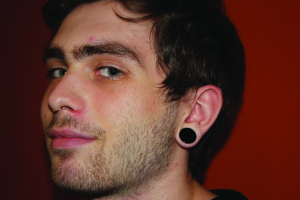
Shawn, Sophomore
How do you feel about your plugs and their size?
“I decided to get gauges because I liked them. I saw other people who had them and I was like, “Oh, this is really interesting and really unique.” I wanted to see if I could do it. I feel like [my gauges] are a good size. They’re big enough for me to know that I have them, so I’m perfectly okay with it. Of course, some people aren’t okay with them being this big. But I’m
perfectly okay with the fact that for all of eternity I will have holes in my ears.”
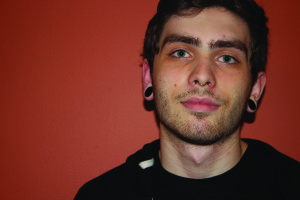
- Body Modification in Numbers
60 percent of women and 42 percent of men in colleges have piercings. - 10 percent of american adults are sporting tattoos, 22 percent of college women have them and 26 percent of men in college do.
- The Hispanic community carries the largest percentage of tattoos and piercings (27 percent) compared to other ethnicities.
Statistics published by Bradley University’s Body Modification & Body Image study of 2012.
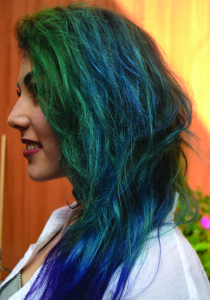
Yadira, Sophomore
Why is dyeing your hair important to you?
“People have always said, ‘I feel like your hair is part of your identity.’ But it’s not part of my identity, it is my identity. I’ve always had this [desire to be] bright, and colorful, and out there and to stand out. It used to be because I wanted people to just see me, but now it’s definitely more of an internal thing. It’s my ‘me time’ where I get to create and make myself a new piece of art, because my hair is my canvas.”
Bryce, Sophomore
What are your tattoos and what do they mean to you?
“The one on my right shoulder is [the symbol for] earth and the one on my left is [the symbol for] fire. [They’re] from a cartoon I used to watch as a kid called “Avatar the Last Airbender.” A lot from that show has become my life philosophy. So, I’m going through each of the four elements and every year on my birthday I get the next one. Each year I kind of think about what that element means to me and my life philosophy with it.”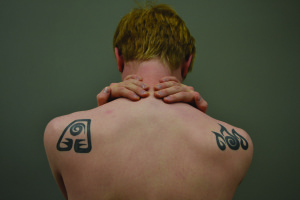
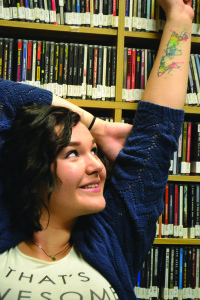
Lauren, First-year
Why did you get this tattoo and style?
“It’s a watercolor map of the world. I have a huge affinity for maps; I’m kind of a geography nerd. The world seems a little less terrifying if it’s right there on your wrist. I’ve always thought the [watercolor] style was gorgeous and I knew a really good tattoo artist. I’ve never been a person who wanted the tattoo that everybody has. I always wanted something unique, and I thought the watercolor was a really nice touch.”
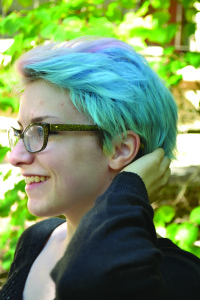
Rachel, Sophomore
What kinds of reactions do you get?
“I’m a counselor for kids during the summer and all the other adult counselors think my hair is really cool every year because I usually dye [it] to match whatever color group I’m with. [My campers] think that’s really cool. I had a little girl [in my group with] short, blonde pixie hair, and she put colored chalk in her hair every day after seeing me so that she matched [me]. Most people have been very supportive of me dyeing my hair.”






















